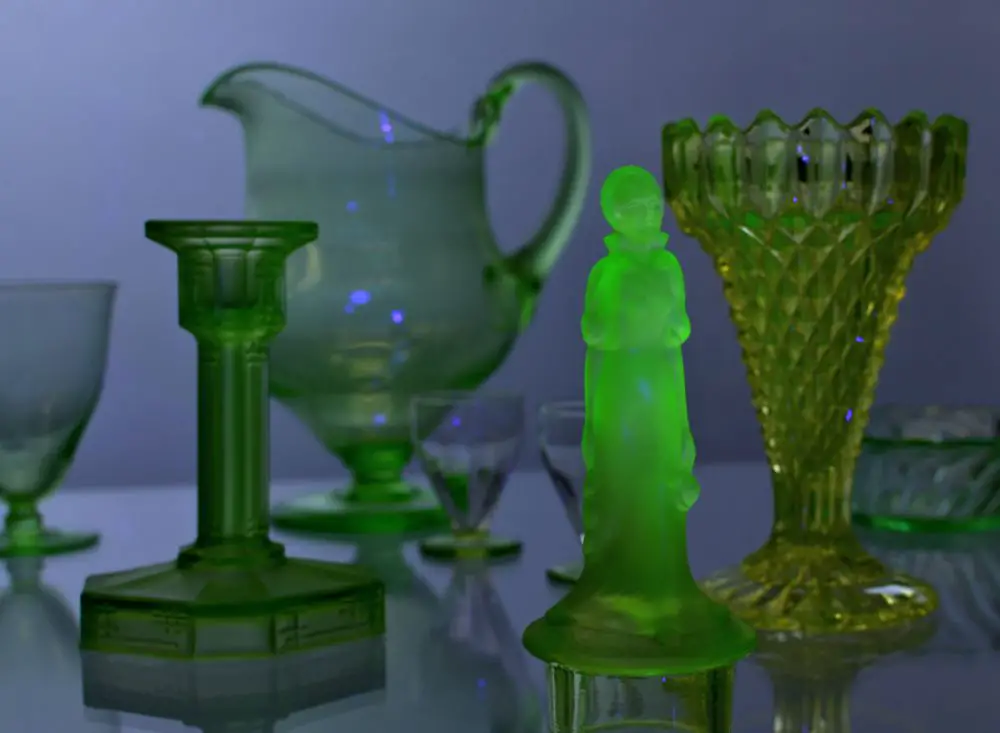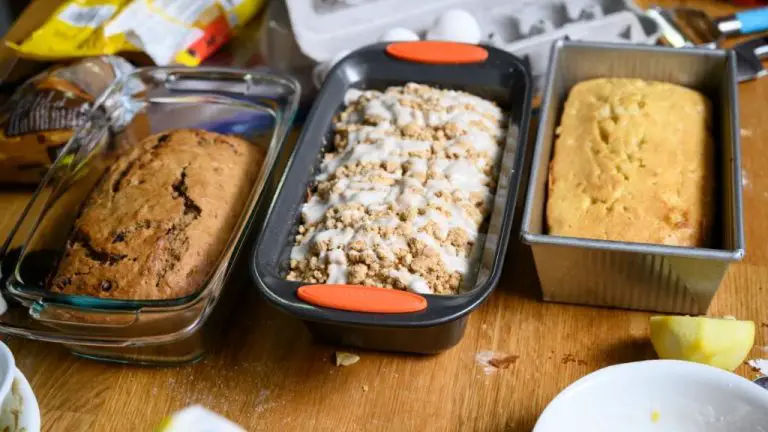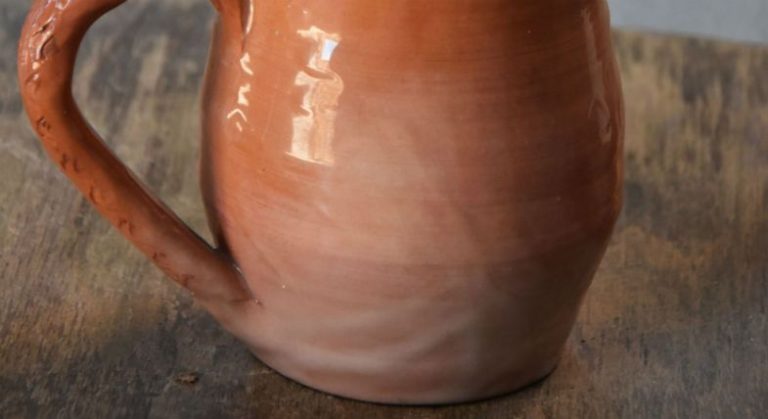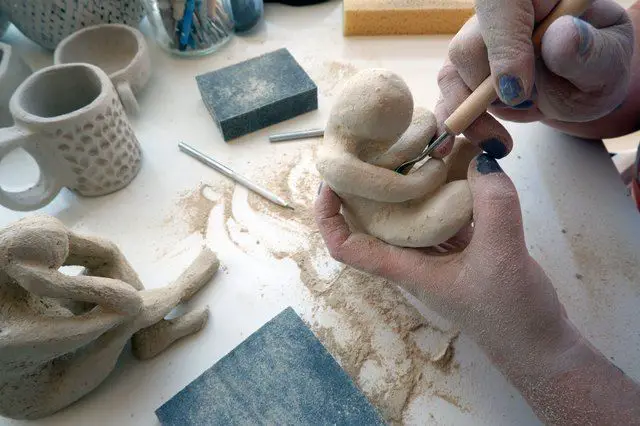Is Porcelain Easier To Throw?
Wheel throwing is a ceramic forming technique that involves centering a lump of clay on a potter’s wheel and shaping it into a vessel by pulling the walls up as the wheel spins. The potter’s wheel enabled this new process of pottery making to develop, called throwing, in which clay is placed centrally on the wheel and then squeezed, lifted and shaped as it spins rapidly (1).
The origins of wheel throwing date back thousands of years. Some of the earliest known examples of thrown porcelain come from China during the Tang Dynasty (618-907 AD). Porcelain clay was centered on a kick wheel and shaped by hand as the wheel turned slowly. Throwing technology gradually improved over centuries as wheel design advanced, enabling porcelain to be thrown thinner and with more precision (2).
The basic process of throwing porcelain on the wheel involves first wedging and centering a lump of porcelain clay on the wheel head. As the wheel spins, the clay is compressed and lifted up with fingers and tools to stretch the walls. The potter controls the spinning wheel speed and uses water to lubricate and thin the clay walls. Once in its desired shape, excess clay is trimmed and the vessel undergoes bisque firing followed by glazing and final firing.
<1> “Potter’s wheel.” Wikipedia, https://en.wikipedia.org/wiki/Potter%27s_wheel. Accessed [Today’s Date].
<2> “Why On Earth Do They Call It Throwing?” Ceramics Today, http://ceramicstoday.glazy.org/articles/why_throwing.html. Accessed [Today’s Date].
Properties of Porcelain Clay
Porcelain clay has unique properties that make it well-suited for throwing on the pottery wheel. According to Soul Ceramics, porcelain clay is highly plastic meaning it is very responsive to movement and shaping, making it easy to manipulate into intricate forms. It also has low shrinkage, meaning it does not contract much during drying and firing. This allows porcelain pieces to retain their shape and dimensions. Finally, porcelain clay has an extremely smooth, fine texture that allows throwing very thin, delicate pieces.
As explained on The Pottery Wheel, these properties of high plasticity, low shrinkage, and smooth texture elevate porcelain above other clays for throwing purposes. The plasticity makes it highly workable on the wheel, while the low shrinkage allows maintaining intricate shapes and thin walls without deformation. The smooth texture enables thin, translucent porcelain wares unmatched by other clays.
Advantages of Throwing Porcelain
Porcelain clay offers several advantages for throwing compared to other clays like stoneware or earthenware. The main benefits are the ability to throw thinner walls, achieve a very smooth surface, and create fine details.
Porcelain’s incredibly fine particle size allows it to be thrown into much thinner walls than most other clays. Skilled potters can throw porcelain vessels with walls as thin as 1-2 mm. Thin walls are desirable for lighting weight pieces and for a delicate, translucent appearance once fired and glazed (Pottery Crafters).
In addition, porcelain’s smooth, plastic quality when thrown results in an exceptionally smooth surface free of grog or grit. The clay has superior plasticity and does not tear or become rough when throwing thin pieces. Smooth surfaces show off subtleties in shape and flow (Ceramic Arts Daily).
Finally, the workability of porcelain allows potters to throw and carve very fine details into their pieces. Delicate lines, patterns, and shapes can be sculpted from the flexible clay body. Porcelain’s white color also helps fine details stand out visually.
Challenges of Throwing Porcelain
Compared to other clays, porcelain can present some unique challenges when throwing on the wheel. One issue is that porcelain tends to be quite sticky when wet. This sticky consistency makes it more difficult to center and open up the clay on the wheel head. The clay will want to cling to the hands and tools rather than smoothly spread out. Using plenty of water when throwing and keeping tools and hands wet can help mitigate the stickiness.
Porcelain also requires more patience compared to other clays. Due to its dense, non-porous nature, it takes longer for moisture to evaporate, so throwing and shaping the clay is a slower process. Rushing the process risks deforming or cracking the ware. Throwing thin porcelain pieces can be especially delicate and time-intensive.
The dense structure also makes porcelain prone to cracking, both during throwing and drying. Applying even pressure and avoiding over-compressing areas are keys to preventing cracks. Proper drying conditions and bisque firing help minimize cracking as well. Patience is critical when dealing with porcelain’s sensitivity.Ceramic Arts Daily Forum
Throwing Techniques for Porcelain
Throwing porcelain requires some adjustments to technique compared to throwing with stoneware or earthenware clays. Here are some tips for successfully throwing thin-walled porcelain pieces:
Use rib tools frequently when throwing porcelain. Rib tools compress the clay and remove excess water, allowing you to thin the walls without tearing. Scraping in an upward motion with a metal rib will condense the clay and create an even surface.Pottery techniques
Keep the wheel spinning at a slow, steady speed when throwing porcelain. The clay needs time to compress as you shape it. Avoid stopping the wheel completely when throwing thin pieces.175+ Blog Post Ideas & Titles About Pottery techniques
Take extra care when drying porcelain pieces. Let them dry slowly and evenly to prevent cracking and warping. Covering with plastic or damp cloths between throwing sessions allows the moisture to evaporate slowly.
Glazing and Firing Porcelain
Glazing is an essential step in creating finished porcelain pieces. The glaze serves to make the bisque porcelain non-porous and give it a glass-like surface finish. Choosing the right glaze fit is important for success.

Porcelain bisque is fired at a lower temperature first to harden and prepare the clay body. Bisque firing temperatures typically range from cone 04 to cone 06 which is approximately 1885-1915°F (1028-1046°C). The bisque firing allows any moisture to be completely released from the clay before applying the glaze.
The final firing, after the glaze has been applied, brings the temperature up to cone 10-14 which is approximately 2381-2651°F (1306-1457°C). This high firing temperature will melt the glaze into a glass-like coating on the surface of the porcelain [1]. Reaching these high temperatures is necessary for the clay particles to undergo the chemical changes required to produce true porcelain.
It’s important to always follow the recommended firing schedules and glaze instructions provided by the clay and glaze manufacturers. The specific firing temperatures and glaze materials are formulated to work together to create finished porcelain wares.
Comparing Porcelain to Other Clays
Porcelain clay has some key differences when compared to other common clays used in pottery like stoneware and earthenware. According to https://potterycrafters.com/stoneware-clay-vs-porcelain-clay/, porcelain tends to be less plastic or flexible than stoneware clay. Stoneware has higher plasticity making it easier to work with and mold into shapes. Porcelain’s lower plasticity can make it more challenging to throw on the wheel.
Porcelain also differs from earthenware clays in its lower porosity. As explained by https://www.soulceramics.com/pages/porcelain-clay, porcelain has a denser clay body than earthenware, resulting in less permeability and fewer pores. This gives porcelain better water resistance and durability. The less porous nature of porcelain can impact throwing, as it requires carefully controlling moisture content.
Examples of Thrown Porcelain
Porcelain is a popular material for potters to throw on the wheel due to its smooth texture and pure white color after firing. There are many examples of elegant thrown porcelain pieces that showcase the fine translucency and delicate thinning possible with expert throwing.
Vases
Porcelain lends itself beautifully to thrown vases, allowing very thin walls and refinement of form. The translucency of high-fired porcelain creates vases that glow when lit from within. Famous potters like Richard Bresnahan create masterful thin-walled porcelain vases with delicate organic shapes.
Bowls
Thrown porcelain bowls display both robustness and elegance. The thinness achievable in porcelain allows for lightweight dinnerware with high visual impact. Porcelain bowls bring an air of sophistication and artistry to the dining table. Their smooth glazed interiors provide a pleasant tactile experience.
Plates
Porcelain’s high strength makes it an optimal material for durable plates and dishware. Skilled throwing can shape thin, even plates with delicate turned rims. The translucency of porcelain plates creates visually stunning place settings. Fine porcelain dinnerware has long been a staple in high-end restaurants and households.
Tips for Beginners
If you’re just starting out with porcelain, keep these tips in mind:
Start with soft, refined porcelain that has already been pugged. Avoid very stiff porcelain clays as they can be challenging for beginners to center and throw evenly. A smoother, softer porcelain will be easier to work with. See this source for recommended porcelain clays.
Allow slow drying times when working with porcelain. Since it shrinks more than other clays, porcelain dries faster and can easily warp or crack. Keep porcelain work covered or wrapped in plastic when not actively throwing to prevent uneven drying. Refer to this guide for more on drying porcelain.
Avoid overworking the porcelain when throwing. Too much wedging or throwing can cause it to become stiff and prone to cracking and tearing. Use a delicate touch and stop throwing once the desired shape is achieved. Additional throwing can lead to thinner walls that warp in firing.
Conclusion
Throwing porcelain has its own unique benefits and challenges compared to other clays. The lower plasticity of porcelain enables more delicate, intricate thrown forms, but also makes centering and pulling the clay more difficult. With practice and patience, the properties of porcelain that initially make throwing more challenging can be leveraged to create stunning lightweight pieces with refined details.
Porcelain’s pale color, translucency, and high vitrification mean it can be left unglazed, or minimalist celadons and glazes allow the form to shine. For beginners interested in trying porcelain, start with soft, highly plastic porcelain clay and simpler forms before attempting more advanced techniques. Focus on centering well and supporting the walls steadily. With time and persistence, the satisfaction of creating beautiful porcelain pottery is within reach.
Though not the easiest clay body to throw, porcelain’s virtues make the effort worthwhile for many potters seeking to make refined artworks that balance fragility and strength. Patience and practice enable potters to fully unlock porcelain’s potential at the wheel.




